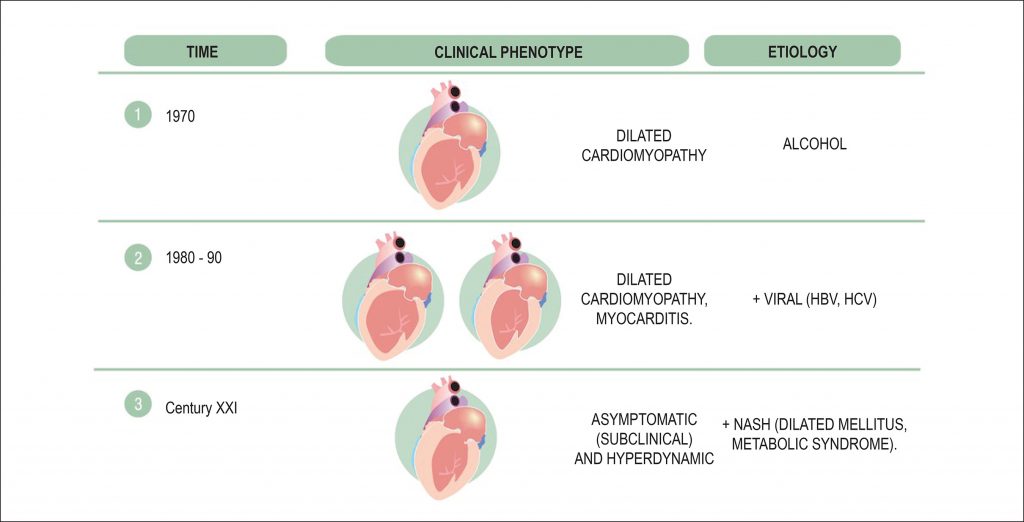Arq. Bras. Cardiol. 2017; 108(6): 564-568
Cirrhotic Cardiomyopathy: A New Clinical Phenotype
DOI: 10.5935/abc.20170066
Introduction
Hepatic cirrhosis is the final spectrum of several aggressions to the liver, with great relevance to public healthcare. National data estimate a prevalence of 0.14% to 0.35%, mortality of 3 to 35 per 100,000 individuals and an annual average of 30,000 hospital admissions in Brazil., With the ageing population, the prevalence of chronic liver diseases, in particular steatohepatitis associated to obesity and metabolic syndrome, results in an increase in the number of hepatic cirrhosis cases.
Cardiac manifestations of hepatic cirrhosis were first reported in the 20th century, with alterations on cardiac output. With new information on the extra-hepatic repercussions of cirrhosis, cirrhotic cardiomyopathy (CCM) has been described as a spectrum of chronic morphofunctional alterations in the heart of cirrhotic patients with no previous cardiac diseases.– The cardiomyocyte lesion is provoked by an imbalance in hemeostasis that occurs in the progression of cirrhosis, with exhaustion of beta-adrenergic receptors, cytoplasmic impregnation by endocannabinoids, and imbalance of nitric oxide and endothelin. CCM is asymptomatic; however, systolic and diastolic structural alterations are described in the electrocardiogram (ECG) and Doppler echocardiogram (ECHO).
[…]
2,417

